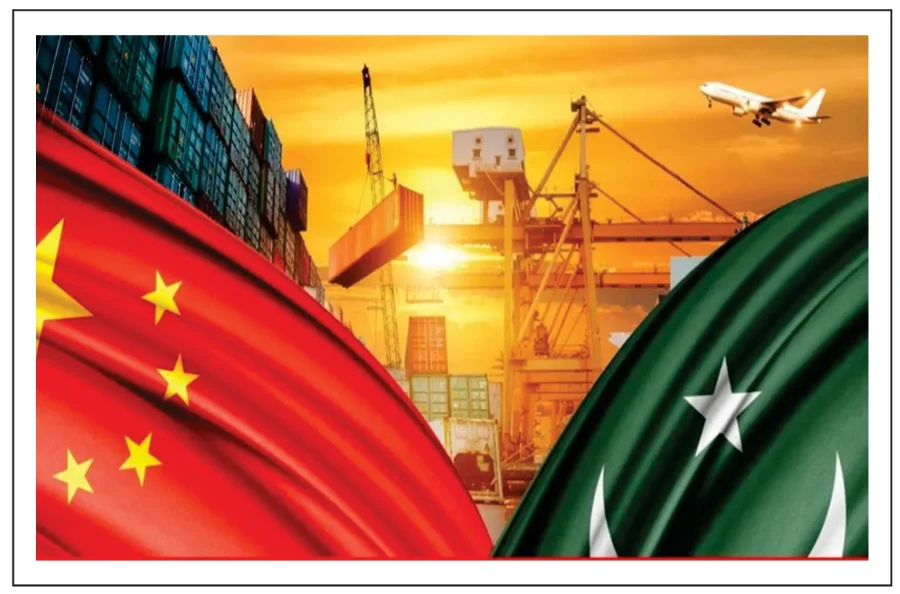Inspired by President Xi Jinping’s vision of regional connectivity and a people-centric development model, the China-Pakistan Economic Corridor is an important part of the Belt and Road Initiative and its flagship project, Gwadar Port, is the jewel in the CPEC Crown. The Belt and Road Initiative (BRI), which aims to revive the ancient Silk Road, is a centerpiece of Chinese foreign policy. As of now, more than 150 countries, with 75 per cent of the world’s population and half of the world’s GDP, have signed up to the BRI. CPEC, a principal component of BRI, aims to connect Pakistan’s Gwadar port city to China’s Xinjiang region through a network of roads, railways, and pipelines.
The CPEC is a massive infrastructure and economic development project, with the aim of enhancing connectivity and trade between Pakistan and China, has played a significant role in fostering economic development and cooperation benefiting both nations. The CPEC has undeniably brought numerous benefits to Pakistan’s economy. The project has resulted in the construction of highways, ports and energy infrastructure, leading to improved transportation and energy efficiency. These developments have had a positive impact on the lives of millions of Pakistanis by providing better access to resources and creating employment opportunities.
The CPEC project made remarkable progress in its first phase (2015-2020), especially in the early harvest period (2013-18) whereby several mega projects have been completed including KKH Phase-II (Havelian-Thakot Section). The focus remained on infrastructure development, energy cooperation, Gwadar port development and people-to-people connectivity. The second phase (2021-25) with a focus on industrialization, agriculture modernization, socio-economic development and cooperation in Science and Information Technologies (SITs) has already taken off aims at reaping the dividends of investment made in energy and transport infrastructure. However, other avenues of cooperation defined in the CPEC-Long-Term Plan (2015-30) are being opened to progress tourism, mines and minerals and petroleum sectors in the second phase.
Furthermore, this collaboration has not only bolstered economic and financial cooperation but has also facilitated people-to-people exchanges and cultural ties, promoting mutual understanding and friendship between the two nations.
China’s investment in Pakistan has also been instrumental in boosting the country’s foreign direct investment and attracting other international investors to the region. The CPEC’s success has positioned Pakistan as an attractive destination for businesses seeking to capitalize on the opportunities offered by this strategic corridor.
It is essential to acknowledge the positive contributions this initiative has made to bilateral relations and economic growth. The CPEC has undoubtedly brought significant advancements to Pakistan’s infrastructure and economy, improving the lives of many citizens. The initiative has not only upgraded Pakistan’s infrastructure but has also opened up job opportunities for skilled labor. This has significantly contributed to the labor market, which was abundant with skilled labor but no job vacancies. According to the data by the end of 2022, CPEC has brought 25.4 billion U.S. dollars in direct investment to Pakistan and created some 236,000 jobs for the country. Furthermore, according to the Chinese Embassy to Pakistan, it has helped Pakistan generate 8,000 megawatts of electricity, add 886 km to the national core transmission grid and build 510 km of highways.
In the last one decade since the initiative of BRI & CPEC, China has invested almost $30 billion, primarily in energy and infrastructure projects. It has bailed out Pakistan at critical junctures when the latter was in danger of becoming bankrupt. Beijing refinanced loans, allowing Pakistan to preserve its foreign reserves at a level sufficient to prevent default. In addition, China recently provided a $2.3 billion loan for two years, providing Pakistan with much-needed breathing room in the face of decreasing foreign reserves. China has also completed major projects under the CPEC in Gwadar that, in addition to Gwadar Port, include the Gwadar Power Plant, the distribution of 2,000 boat engines to the fishermen of Gwadar, the Khuzdar-Panjgur transmission line that connects Makran with the national grid, the new Gwadar International Airport project, the Pak-China Friendship Hospital, the Pak-China Technical and Vocational Institute in Gwadar, the Gwadar East Bay Expressway project and the Gwadar Free Zone.
The CPEC, a flagship project of the China-proposed Belt and Road Initiative (BRI), has brought tremendous socio-economic benefits to Pakistan, transforming vital sectors, and generating sustainable development in the South Asian country. Over the past 10 years, CPEC has emerged as a corridor of opportunities for Pakistan and its people, and improved people’s lives and overall economic prosperity.
The longstanding deep-rooted friendship between China and Pakistan has been strengthened since the inception of the multi-billion-dollar project, elevating from diplomatic to robust economic relations. All-weather strategic cooperative partnership between Pakistan and China in producing fruitful win-win outcomes set a fine example for the rest of the world.
The construction of roads and railway networks, ports and airports in the country under CPEC has enhanced connectivity and boosted trade. The country’s Gwadar Port established under CPEC would act as a regional trade and commerce hub, benefiting not only Pakistan but other landlocked Asian countries as well.
China has not only achieved remarkable growth at home but also shared its development dividends with developing countries around the globe including Pakistan through the BRI. The success of the CPEC lies in maintaining a balance between economic development and responsible financial management. With careful planning, transparent governance and effective utilization of resources, the CPEC can continue to be a catalyst for positive change in Pakistan and deepen the economic cooperation between China and its all-weather friend Pakistan.
As the CPEC moves closer to fruition, its positive impact will extend beyond the borders of China and Pakistan. The project holds the potential to transform the entire region, fostering economic growth and creating new opportunities for Iran, Afghanistan, Central Asian Republics and beyond. The CPEC decade stands as a testament to the power of cooperation and the “iron brothers” determination to forge a path towards shared progress and prosperity.
views expressed are writer’s own.









